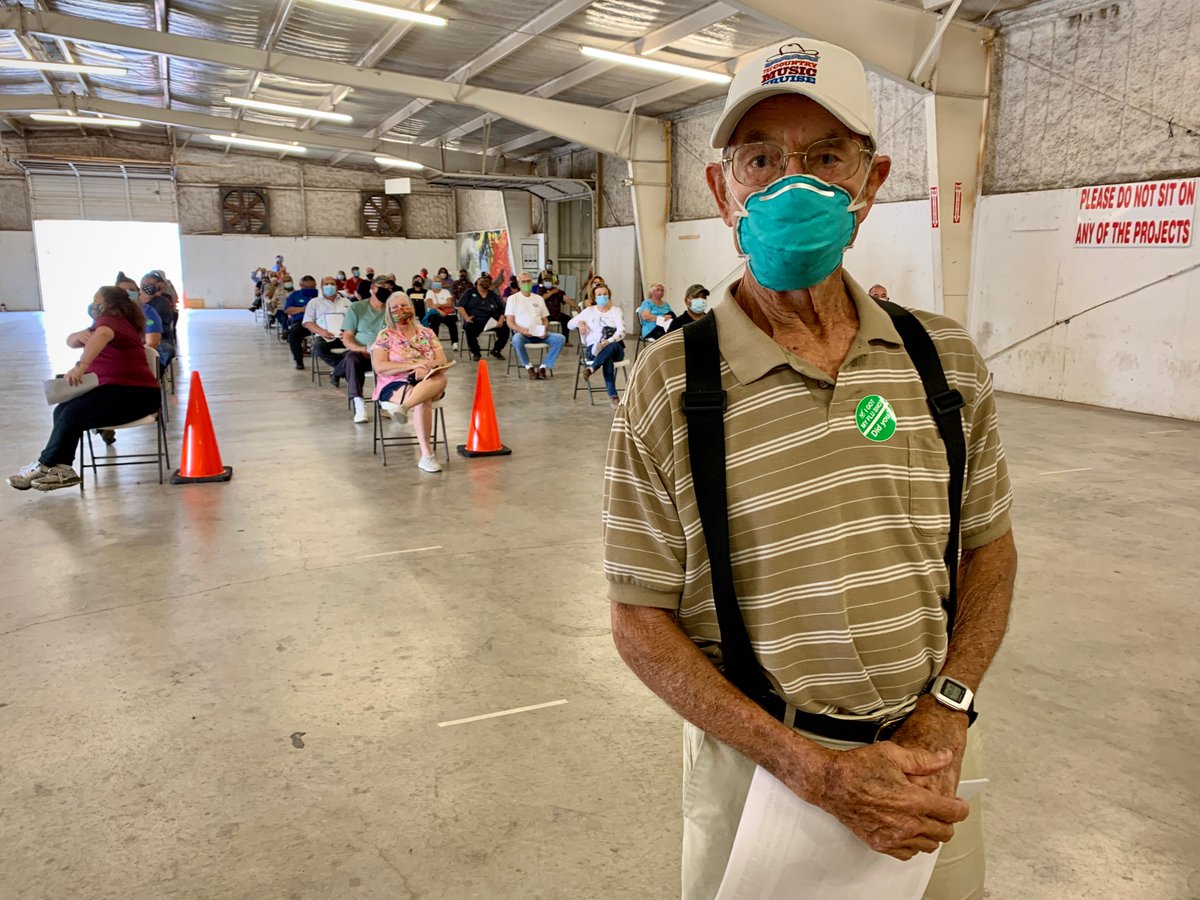
1/ Who you get to vote for to represent you is based on which districts you live in.
Texas lawmakers will soon start changing those districts to account for population growth.
It’s a complicated process that will have huge political implications for the next 10 years. #txlege
Texas lawmakers will soon start changing those districts to account for population growth.
It’s a complicated process that will have huge political implications for the next 10 years. #txlege
2/ Every decade, a national census is conducted to count every resident in the country.
The new population counts are used to determine the number of seats each state will have in the U.S. House of Representatives and to draw new congressional and state legislative maps.
The new population counts are used to determine the number of seats each state will have in the U.S. House of Representatives and to draw new congressional and state legislative maps.
3/ The point is to draw roughly equally populated districts to reflect population growth and guarantee equal representation — and usually for the party in control to solidify their majority. bit.ly/3iWjDHf
4/ Unlike the U.S. House, the Texas Legislature has a fixed number of seats — 31 in the Senate and 150 in the House.
So Texas’ legislative districts change every 10 years, but the total number of lawmakers doesn’t. bit.ly/3iWjDHf
So Texas’ legislative districts change every 10 years, but the total number of lawmakers doesn’t. bit.ly/3iWjDHf
5/ In addition to U.S. Congress and #txlege, the State Board of Education and state judicial districts undergo redistricting after the census.
So do some local governmental bodies like city councils, county commissioners courts and school district boards. bit.ly/3iWjDHf
So do some local governmental bodies like city councils, county commissioners courts and school district boards. bit.ly/3iWjDHf
6/ When redistricting begins, legislators are supposed to work together to draw the maps fairly and equally.
But oftentimes, representatives move lines to protect themselves or put those in the opposition at a disadvantage — an act called gerrymandering. bit.ly/36kZgi7
But oftentimes, representatives move lines to protect themselves or put those in the opposition at a disadvantage — an act called gerrymandering. bit.ly/36kZgi7
7/ Typically, powerful members and those in the majority have more of a say in the process than members in the minority.
Since state Republicans held onto their 20-year majority in Texas, they’re positioned to further entrench their power until 2031’s redistricting.
Since state Republicans held onto their 20-year majority in Texas, they’re positioned to further entrench their power until 2031’s redistricting.
8/ Their majority also extends to the Legislative Redistricting Board.
The board is a five‐member body of state officials, including the lieutenant governor and speaker of the house, that draws the maps when #txlege can’t agree on them. bit.ly/2YpBT2s
The board is a five‐member body of state officials, including the lieutenant governor and speaker of the house, that draws the maps when #txlege can’t agree on them. bit.ly/2YpBT2s
9/ According to recent court findings, the cost of Republican entrenchment has been the repeated disenfranchisement of voters of color as the GOP-controlled Legislature drew maps that diluted their voting strength. bit.ly/3t3JQIF
10/ Typically, redistricting is carried out during the regular legislative session — which starts in January and ends in May — once lawmakers receive detailed census results around mid-February.
But the pandemic and legal battles delayed census counting. bit.ly/3iUE8Ep
But the pandemic and legal battles delayed census counting. bit.ly/3iUE8Ep
11/ Due to the delays, the Census Bureau revealed this week that the detailed results lawmakers need likely won’t be available until at least two months after the 2021 #txlege session ends.
This means redistricting will happen in a special session. bit.ly/3ckPyjB
This means redistricting will happen in a special session. bit.ly/3ckPyjB
12/ President Joe Biden plans to include undocumented immigrants in the state-by-state census tallies, reversing former President Donald Trump’s efforts to exclude them from being counted when congressional seats are divvied up. bit.ly/2Me3zEX
13/13 To learn more about how the redrawing of political maps will impact Texas politics for the next ten years, join us on Instagram on Jan. 29 at noon Central for the next installment of our series explaining the Texas Legislature. bit.ly/3iUDwhY 

• • •
Missing some Tweet in this thread? You can try to
force a refresh







